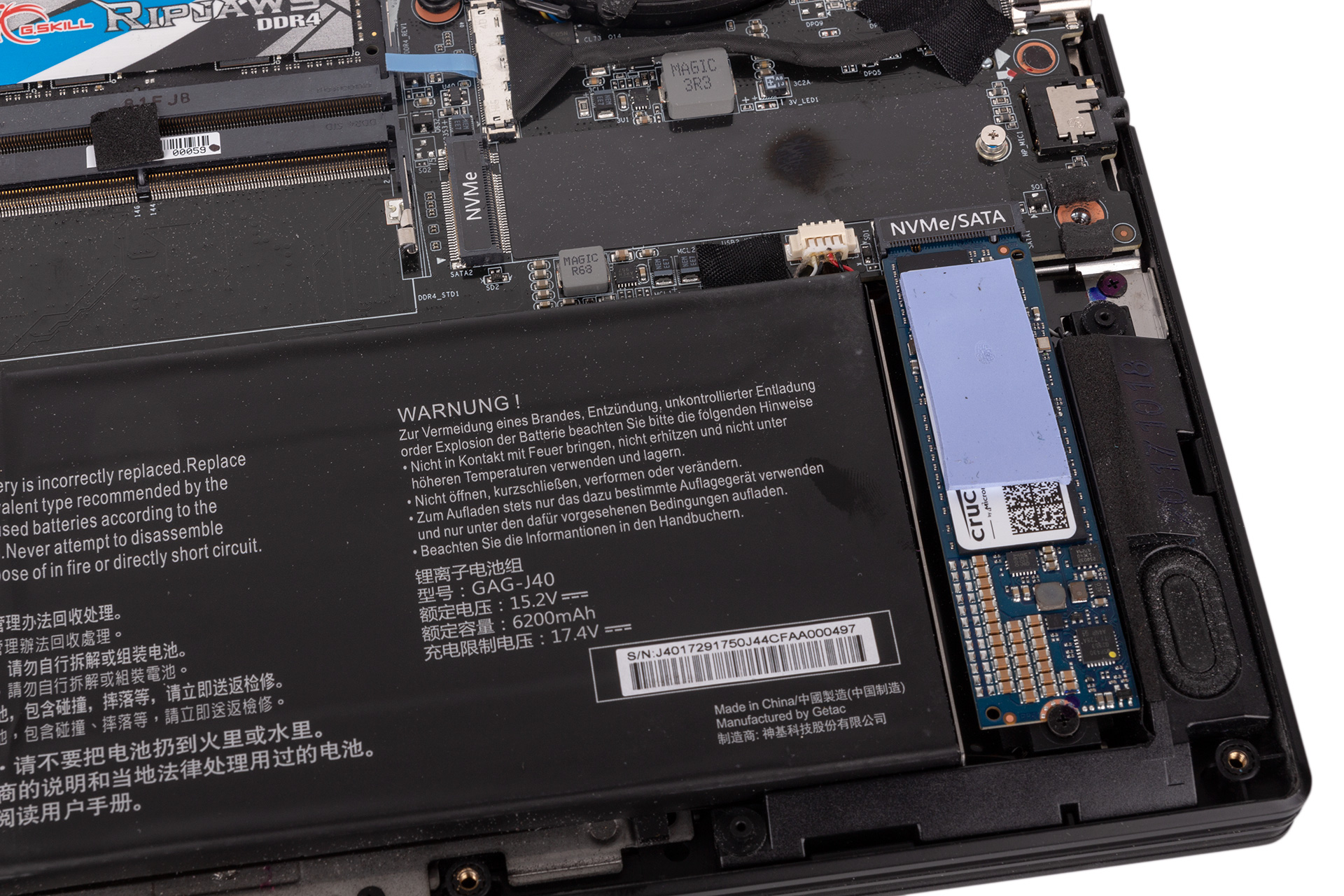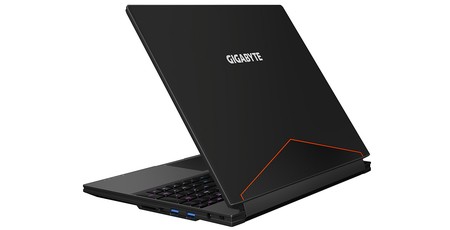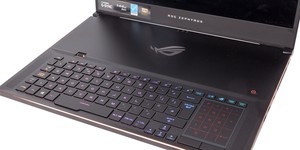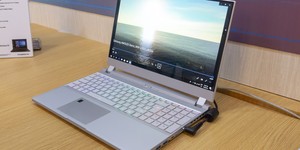Performance Analysis
Our gaming tests reveal similar performance to the PC Specialist Recoil II – unsurprising since they have the same CPU and GPU. However, the Gigabyte model shows a pattern of starting strong but then gradually falling behind relative to the PC Specialist one, suggesting that thermal throttling is a bit more prevalent in gaming scenarios. This again isn’t hugely surprising, since the chassis is thinner and lighter. The differences (other than in VRMark for some reason) are not game-changing, and any laptop that can cope with Deus Ex at 1080p at Very High settings is going to do just fine in the vast majority of other games at 1080p with maximum or near-maximum settings.
The six cores and 12 threads of the Core i7-8750H are excellent in multi-threaded workloads, so you can be sure that even if you have some demanding tasks outside of gaming to throw at it, it’ll hold up well. This is important for an all-round form factor like 15.6”.

For various reasons such as updated testing and changing how we assess it, we don’t have comparable figures for battery life. Still, over an hour of demanding gameplay when not plugged in is good, but not great. There was plenty of battery left in the tank after the 68 minutes recorded, but at this stage the GPU throttled to such an extent that frame rates became unplayable. We are not sure why this behaviour occurs, and we’ve observed it elsewhere recently too, so it seems to be something in Windows and/or Nvidia drivers. We were hoping for a little more on the productivity front as well, but overall battery life is okay and the capacity is very high for the class.
The limitations of the SATA drive are obvious in CrystalDiskMark. The real-world impact is there, too, but it’s much smaller, as shown by PCMark 8. However, at this price, NVMe is pretty much a must-have; it’s hard to know why it’s been excluded.
As is often the case, display performance is a mixed bag. Having a 144Hz refresh rate is definitely a big plus for gamers. Regarding image quality, most areas – including gamut coverage, the uniformity of the lighting and colour, and the colour reproduction – are solid, and the latter is especially so. The X-Rite Pantone certification appears to be more than just marketing jargon, as an average delta E value of 1 is no joke. However, the peak brightness of 265cd/m2 is a little low, and the contrast could be better. The gamma also appears to be quite off the ideal of 2.2 at 1.9, and this presented in subjective image testing as slightly washed out mid-tones. Games do look rather good still, but very dark scenes will cause you to notice the backlight bleed in the lower corners especially.

Stress testing the CPU saw the temperature reach 76°C, and the fans were very noticeable too. However, a GPU test pushes temperatures of both components to around 90°C, and the fans spin to full power (5,600 RPM) to cope. Cooling components like these in a chassis like this will always result in some noise, though. We did notice that when plugged in the Aero 15W runs all CPU cores constantly at a high frequency, forcing the cooling fan to stay on at around 2,500 RPM, although that’s not as loud as the figure seems to imply.

Conclusion
There’s no denying that elements of the Aero 15W are desirable; the chassis is lovely, the RGB keyboard works nicely, and the 144Hz IPS panel is mostly a treat. However, we don’t feel it has quite what it takes to justify its £1,900 price tag. One major oversight is the exclusion of NVMe storage, but otherwise the hardware choices are spot on for a 15” gaming laptop with a 1080p screen.
Shopping below this price, you can get excellent value machines like the PC Specialist Recoil II (less desirable chassis, but the same hardware plus an NVMe SSD and the option for a 144Hz panel), while when you stick to the same price level, the equivalent spec Razer Blade 15 is available for just £80 more, netting you an even nicer and smaller chassis, dual-channel memory, NVMe storage, an above-screen webcam, and the far superior Synapse software. As such, Gigabyte’s Aero 15W is stuck in the middle of two very good offerings at the budget and premium ends of the market, but priced far too closely to the latter to be a real winner.

MSI MPG Velox 100R Chassis Review
October 14 2021 | 15:04









Want to comment? Please log in.